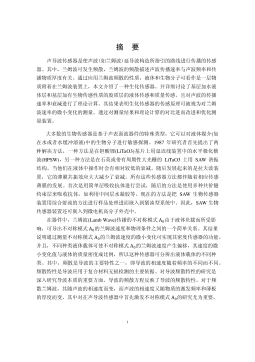目 录
摘要
ABSTRACT
第一章 绪论 ......................................................................................................................... 1
§1.1 引言 ........................................................................................................................... 1
§1.2 国内外研究现状 ...................................................................................................... 3
§1.3 热致变色薄膜的应用............................................................................................... 5
§1.4 课题研究目的和意义 .............................................................................................. 6
§1.5 课题研究的创新点 .................................................................................................. 6
§1.6 本章小结 ................................................................................................................... 7
第二章 钨钒共溅热致变色薄膜的理论分析 ................................................................... 8
§2.1 光学特性理论分析 ................................................................................................... 8
§2.1.1 薄膜矩阵计算理论 ........................................................................................... 8
§2.1.2 变温光学模型 ................................................................................................. 10
§2.1.3 光学特性数值计算 ..........................................................................................11
§2.2 相变机理分析......................................................................................................... 13
§2.3 本章总结 ................................................................................................................. 15
第三章 钨钒共溅热致变色薄膜的制备 ......................................................................... 16
§3.1 热致变色薄膜制备方法概述................................................................................ 16
§3.1.1 反应溅射法 ..................................................................................................... 16
§3.1.2 真空蒸发法 ..................................................................................................... 16
§3.1.3 溶胶-凝胶法 .................................................................................................... 17
§3.1.4 脉冲激光沉积法 ............................................................................................. 17
§3.2 磁控溅射简介和原理 ............................................................................................ 18
§3.3 磁控溅射法制备钨钒共溅热致变色薄膜 ........................................................... 20
§3.3.1 钨钒共溅热致变色薄膜制备的工艺流程 ................................................... 20
§3.3.2 典型工艺参数 ................................................................................................. 22
§3.4 影响钨钒共溅热致变色薄膜的因素 ................................................................... 23
§3.4.1 溅射时工作压力对薄膜的影响 .................................................................... 23
§3.4.2 溅射功率对薄膜的影响 ................................................................................. 23
§3.4.3 沉积时间对薄膜的影响 ................................................................................. 24
§3.4.4 退火温度和退火时间对薄膜的影响 ............................................................ 24
§3.5 本章总结 ................................................................................................................. 25
第四章 钨钒共溅热致变色薄膜的特性测试与分析 .................................................... 26
§4.1 钨钒共溅热致变色薄膜特性分析 ....................................................................... 26
§4.1.1 XPS 分析 .......................................................................................................... 26
§4.1.2 XRD 分析 ......................................................................................................... 28
§4.1.3 SEM 分析 ......................................................................................................... 29
§4.3 钨钒共溅热致变色薄膜光学特性分析 ............................................................... 31
§4.3.1 光学测试仪器与平台 ..................................................................................... 31
§4.3.2 薄膜光学特性测试与分析 ............................................................................ 33
§4.4 本章总结 ................................................................................................................. 35

 2024-10-14 53
2024-10-14 53
 2025-01-09 13
2025-01-09 13
 2025-01-09 22
2025-01-09 22
 2025-01-09 30
2025-01-09 30
 2025-01-09 11
2025-01-09 11
 2025-01-09 20
2025-01-09 20
 2025-01-09 9
2025-01-09 9
 2025-01-09 38
2025-01-09 38
 2025-01-09 11
2025-01-09 11
 2025-01-09 13
2025-01-09 13










